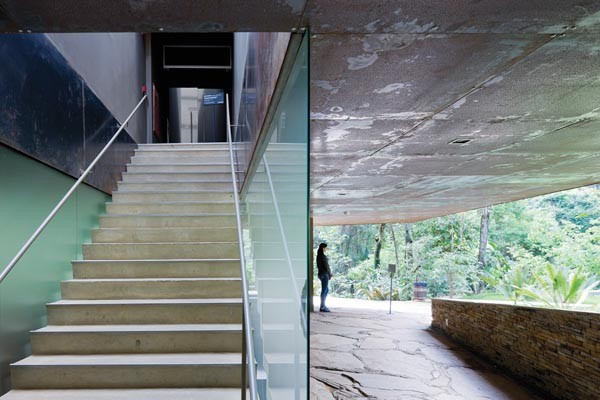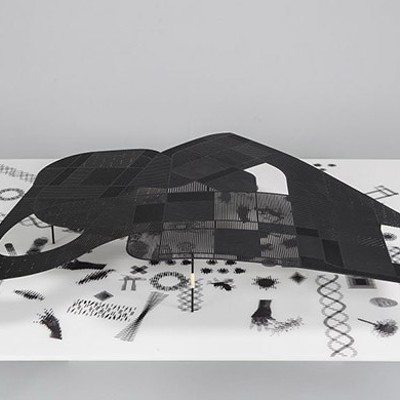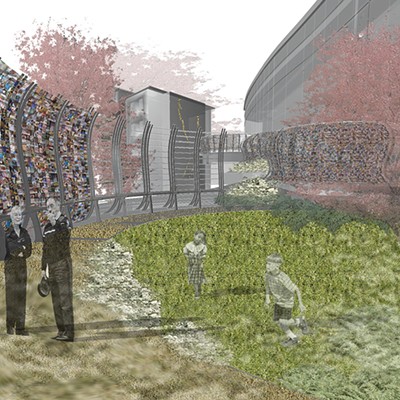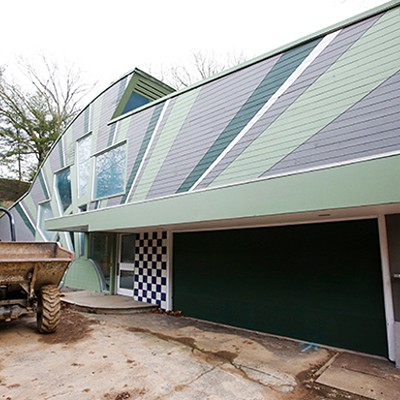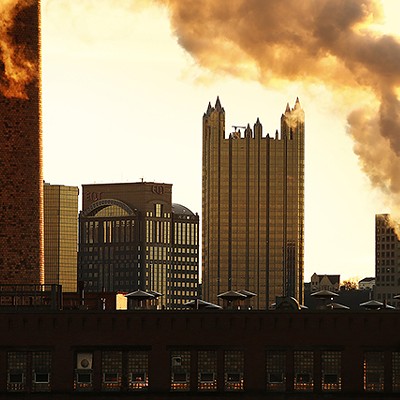In a series of essays published as the book Inside the White Cube: The Ideology of the Gallery Space, critic Brian O'Doherty broke down the walls of the typical modern art-exhibition space in pointed metaphorical fashion. The austere white surfaces of most contemporary art galleries are not neutral, he asserted, but active participants in the aesthetics and even politics of our perception of art. They seem to insist that "The outside world must not come in," he complained, offering an indictment of modern architecture that transcended the specifics of museums.
Since the book's 1976 publication, colorful and historically referential postmodern museums (including Pittsburgh's Heinz Architectural Center) succeeded modern ones, and hyper-sculptural buildings (epitomized by Frank Gehry's Guggenheim Museum in Bilbao) followed those. But as the continuing publication of O'Doherty's text indicates, the ubiquity of hermetic white walls for display has persisted with few exceptions.
The exhibition White Cube, Green Maze, at the Heinz Architectural Center, picks up on O'Doherty's critiques. It showcases a handful of projects in which museum walls, rather than being austere and enclosed, are both open to nature and intertwined with landscape in provocative and invariably elegant ways. The catalog, with texts by curator Raymund Ryan and landscape historian Marc Treib, also includes a new essay by O'Doherty addressing the phenomenon.
Meanwhile, the entrance to the exhibition from the Carnegie Museum of Natural History's Hall of Sculpture engages the issue with wit. A double-cube-shaped vestibule, newly built within the existing entry for this show, envelops the visitor. Its interior walls are not white, but rather completely covered with panoramic photoprints of lush landscapes (and relevant quotes) from the projects in the show. The Architectural Center remains a building within a building, so it is left to wryly invert the relationship of landscape to architecture in this entry piece, while displaying more nuanced versions of that relationship as seen elsewhere in the show.
Among these, Iwan Baan's photographs, specially commissioned for the exhibit to document all of the projects, deserve their special prominence. Baan's images of the Benesse Art Site Naoshima, in Japan, showcase the multi-component complex that includes a children's camp, a hotel and an art museum, among other features spread across three dramatically steep islands. The photographs emphasize the stunning juxtapositions of nature and architecture, showing how buildings are positioned to frame picturesque views of the seacoast — a longstanding tradition of Japanese architecture implemented here with architect Tadao Ando's modernist restraint. A few remarkable aerial views underscore the poetic geometry in which Ando's pavilions descend into the dramatic landscape and emerge from it again, choreographing acts of movement, viewing and contemplation.
At Insel Hombroich, in Germany, Baan captures the sense of the introspective wanderer perambulating through the woods amid the shifting aesthetic stimuli of the historic, the natural and the novel. The photos have an immediacy that would have pleased romantic painter Caspar David Friedrich, noted for his scenes of solitary figures wandering in nature. Perspectives through leafy groves reveal framed views and paths to the open doors of compelling gallery spaces. The pavilions themselves are works by Alvaro Siza, Raimund Abraham and, again, Tadao Ando — all modern masters. But the sense of architecture's submission to the landscape, and interpenetration with it, is palpable.
All the more provocative, then, that each project, to one degree or another, emerges on a post-industrial site. These range from the reclaimed industrial waterfront at Seattle's Olympic Park to the reclaimed and reforested industrial sites of the Benesse Art Sites, and the remarkable salvaged rocket base at Insel Hombroich. As curator Raymund Ryan allows in museum text, the term "brownfield" could almost have been a part of the title.
This is noteworthy, because modern architecture was originally the offspring of the values and techniques of the Industrial Revolution, and sometimes an agent of its wrongheaded urban and rural clear-cutting. Yet here, paired with sensitive implementations of landscape, modern architecture appears as an agent to artfully repair some of the ills of industry, much better than postmodern or digitally driven architecture has been able to do. O'Doherty's original critique has not supplanted modern exhibition architecture, but rather provided it with a means to address its shortcomings and renew its relevance.

